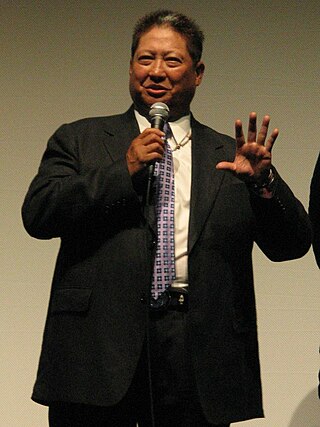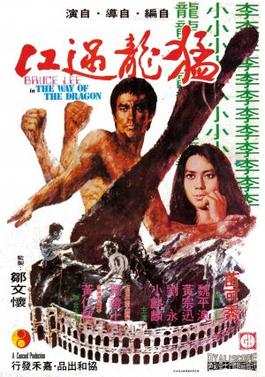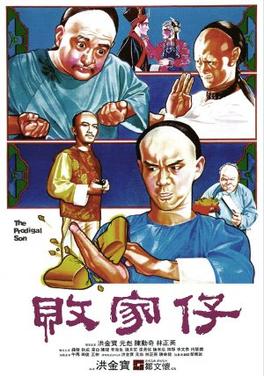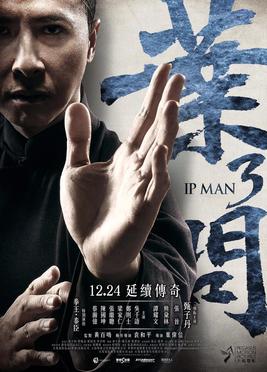Knife fights
Knife fights, as well as knife-throwing stunts, are staged for dramatic effect in action films. In Under Siege , Commando , Gangs of New York , Machete , and Machete Kills , knife fights are shown as climactic battles. A common theme in such films is for the hero to discard a gun or similarly superior weapon, in order to engage the otherwise unarmed villain in "fair" knife-to-knife combat. In the 2002 film version of The Count of Monte Cristo , the main character, Dantes, agrees to engage in a knife fight against Jacopo, a member of a smuggler's crew (the captain of which calls Jacopo "the best knife fighter I have ever seen"). Dantes defeats Jacopo but spares his life, gaining a pivotal ally in his future endeavors.
One of the most famous cinematic knife fights occurs in From Here to Eternity . The scene—occurring in a back alley—is stark and realistic, lacks background music and uses pitch black shadow.
In the movie Force 10 from Navarone , a knife fight appeared between Sgt. Weaver, an African-American medic Soldier, played by Carl Weathers, and Capt. Drazak, an officer of the Chetniks, allies to Nazi Germany, played by Richard Kiel. The fight ended with Drazak's death.
In the film Commando , starring Arnold Schwarzenegger, there is a knife fight at the end of the movie between John Matrix (Arnold Schwarzenegger) and Bennett played by Vernon Wells. They begin with the knife, and then end up in a No-holds-barred CQC.
In the film Cobra , starring Sylvester Stallone as a city cop who must stop a knife using serial killer and cult member the Night Slasher played by Brian Thompson. There is a fight scene at the end involving a knife fight between Stallone's character Cobra and the Night Slasher. The menacing looking knife used by the Night Slasher is a brass knuckles or more like a spiked knuckles, modern version of a trench knife.
The film Eastern Promises has a rather intense knife fight that rivals that of the also psychologically disturbing knife fight scene from Saving Private Ryan .
In The Bourne Identity (2002 film) , Jason Bourne (played by Matt Damon) had a knife-fight encounter with Castel, an assassin sent to kill him. In the struggle, Jason Bourne equalizes his unarmed position against the assassin's knife by arming himself with a pen.
In Kill Bill , a knife-fight occurs between the Bride and Vernita Green, during which the pair severely damage Green's living room, only to abruptly halt when Green's daughter is dropped off by the school bus and seen walking towards the house. Shortly thereafter, Green sneakily pulls a gun, and the Bride responds by throwing her knife, to deadly effect.
The Hunted (2003, William Friedkin) was a unique film that put an emphasis on showing knife combat. Starring Benicio del Toro and Tommy Lee Jones, each character has a special affinity for knives, due to participating in various special operations missions under military service, which required use of a knife as a primary weapon. Also Friedkin's Bug (2007) features a knife-fight.
A Grande Arte (1991) along with the above-mentioned The Hunted, is one of the rare films to focus on knife combat and features training scenes as well.
Dune (1984, David Lynch) and the 2000 Dune miniseries, based on Frank Herbert´s bestselling science fiction novel Dune , show a world where a corporeal shield (a force-field projector) makes laser and projectile weapons useless. Because of that, wars and duels are settled by knife-fighting, which is altered by the presence of the shield: a fast-moving knife bounces off the shield; a slow-moving knife can penetrate the shield to reach a vital organ. The climactic duel, between Paul Muad´dib and Feyd-Rautha, used only knives (no shields) and martial-arts abilities.
Michael Jackson's music video Beat it features a highly stylized depiction of two men knife-fighting using switchblade knives, with their wrists tied. This is reminiscent of a similar depiction in West Side Story.
In Quantum of Solace (2008) James Bond (Daniel Craig) enters the apartment of Edmund Slate, the man he was sent to investigate. Slate comes out of nowhere and tries to kill him with a switchblade. They struggle, Bond arms himself with scissors, disarms Slate by bending his wrist forward, and stabs him in the neck and femoral artery, causing Slate to bleed to death.
In The Expendables , Lee Christmas (played by Jason Statham) frequently makes use of combat knives when he is not in possession of a firearm and uses them both as projectiles and in hand-to-hand combat. Gunner (Dolph Lundgren) also uses a large bowie knife but gives it to Lee at the beginning of the film.
In The Expendables 2 , Lee Christmas again makes use of combat knives. He is shown to be skillful enough to defeat a squad of enemies on his own, as well as challenge the villain Hector (played by Scott Adkins), himself a formidable knife-fighter. Hector pulls his knife on Christmas when the latter runs out of blades; he arms himself with a pair of brass knuckles, with which he fights and defeats Hector.
In The Man From Nowhere , Cha Tae-Shik (played by Won Bin) makes use of a switchblade and the art form kali to combat gangsters in a large condominium towards the finale of the film. After defeating the gangsters, he fights their hired assassin who also wields a karambit. Both fighters fight close quarters until Cha Tae-Shik gains the upper hand and stabs the hired assassin in the heart.
In The Avengers , Hawkeye (played by Jeremy Renner) fights Black Widow (played by Scarlett Johansson) while under the influence of Loki. When deprived of his bow, Hawkeye draws his knife and continues the fight until he is disarmed and incapacitated.
In Captain America: The Winter Soldier , during the first encounter between Steve Rogers (played by Chris Evans and the titular antagonist (played by Sebastian Stan), the Winter Soldier uses multiple knives against Rogers in their melee along with various firearms.
In The Birth of a Nation (2016 film) , the film provided various hand-to-hand close combat and knife combat techniques in a climactic “last stand” battle scene, showing Nat Turner (played by Nate Parker) and his group of slave rebels facing the militia and plantation defenders at an armory.










